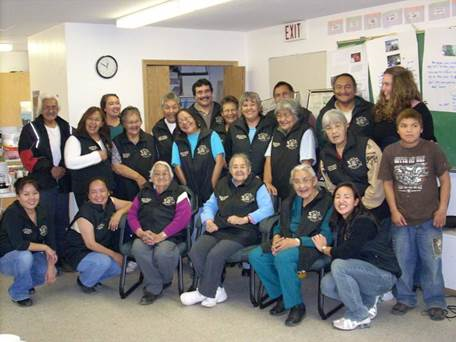 This research project aimed to develop, apply, and evaluate methods for identifying indigenous measures of co-management success, which support meaningful local involvement and give voice, respect, and legitimacy to traditional knowledge and values. Communities may define sustainability differently from each other and from experts, requiring a unique set of progress measures. Community-based environmental monitoring is an approach by which First Nation communities can apply traditional knowledge, track the health of their environment, and implement locally relevant sustainability objectives. Teams of Tl'azt'en Nation community members developed 252 Tl'azt'en environmental measures that incorporated the knowledge, needs, beliefs, and concerns of the community. Knowledge co-production can generate a more holistic understanding of the environment than either scientific or Indigenous knowledge alone. Specifically, this project examined five focal plant and animal species, representative of traditional use activities. These five plants and animals, selected by Forest and Elders Team members, were: 1) Duje hoonayin~ picking huckleberries, 2) Yoo ba ningwus hunult'o~ gathering soapberries for medicinal use, 3) Huda ha'hut'en~ hunting moose, 4) Tsa ha tsayilh sula~ trapping beaver, and 5) Talo ha'hut'en~ fishing salmon.
This research project aimed to develop, apply, and evaluate methods for identifying indigenous measures of co-management success, which support meaningful local involvement and give voice, respect, and legitimacy to traditional knowledge and values. Communities may define sustainability differently from each other and from experts, requiring a unique set of progress measures. Community-based environmental monitoring is an approach by which First Nation communities can apply traditional knowledge, track the health of their environment, and implement locally relevant sustainability objectives. Teams of Tl'azt'en Nation community members developed 252 Tl'azt'en environmental measures that incorporated the knowledge, needs, beliefs, and concerns of the community. Knowledge co-production can generate a more holistic understanding of the environment than either scientific or Indigenous knowledge alone. Specifically, this project examined five focal plant and animal species, representative of traditional use activities. These five plants and animals, selected by Forest and Elders Team members, were: 1) Duje hoonayin~ picking huckleberries, 2) Yoo ba ningwus hunult'o~ gathering soapberries for medicinal use, 3) Huda ha'hut'en~ hunting moose, 4) Tsa ha tsayilh sula~ trapping beaver, and 5) Talo ha'hut'en~ fishing salmon.
Various research events that have taken place over the course of the project include: Forest Team focus groups, Forest Team member interviews, an Elders Team retreat, and a community product development workshop. Photovoice was among the methodologies used and tested to facilitate the process. The knowledge shared at these events has contributed to the formulation of Tl'azt'en environmental measures of co-management success, specifically related to environmental sustainability.

 Respect for the People
Respect for the People